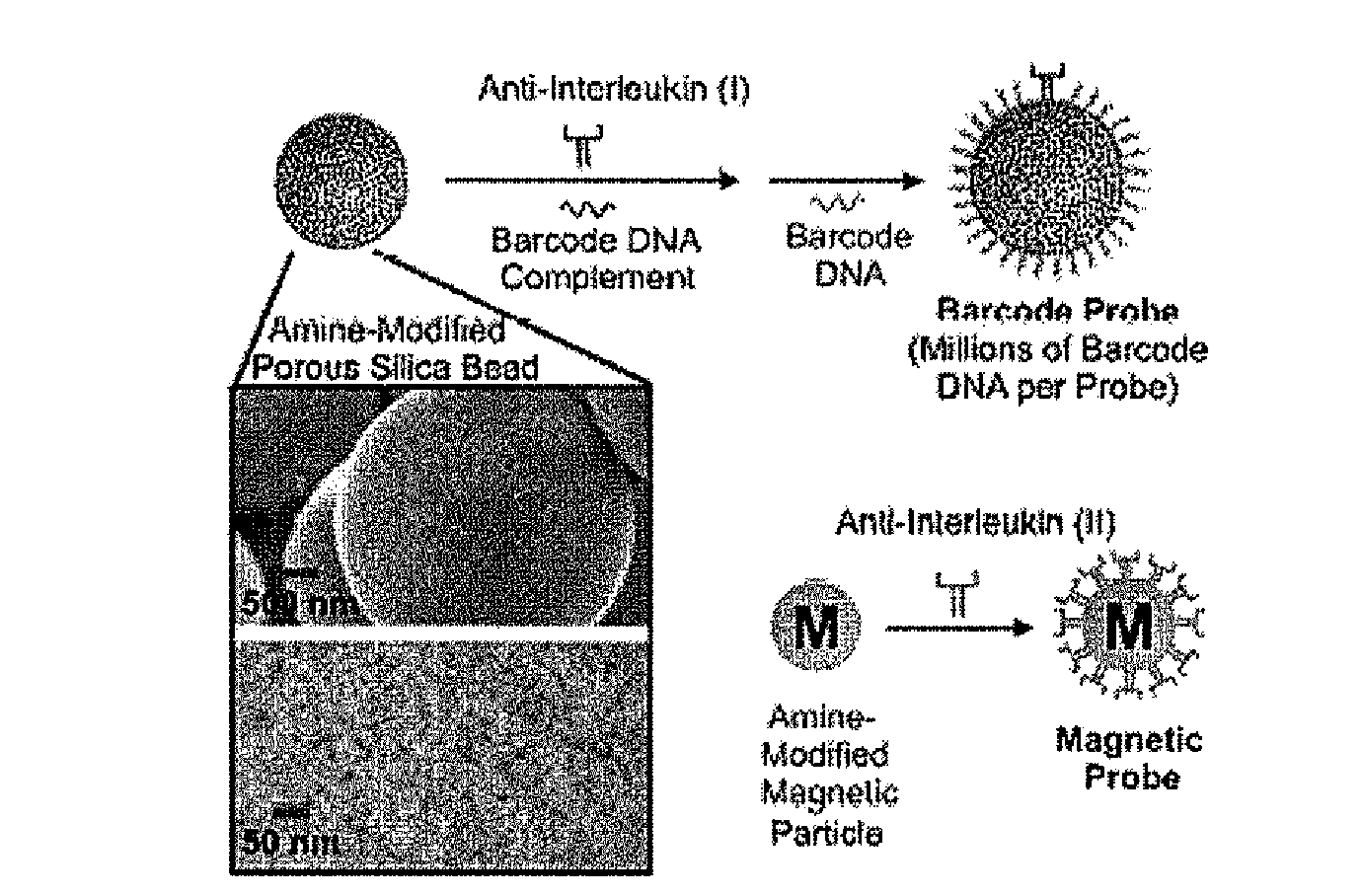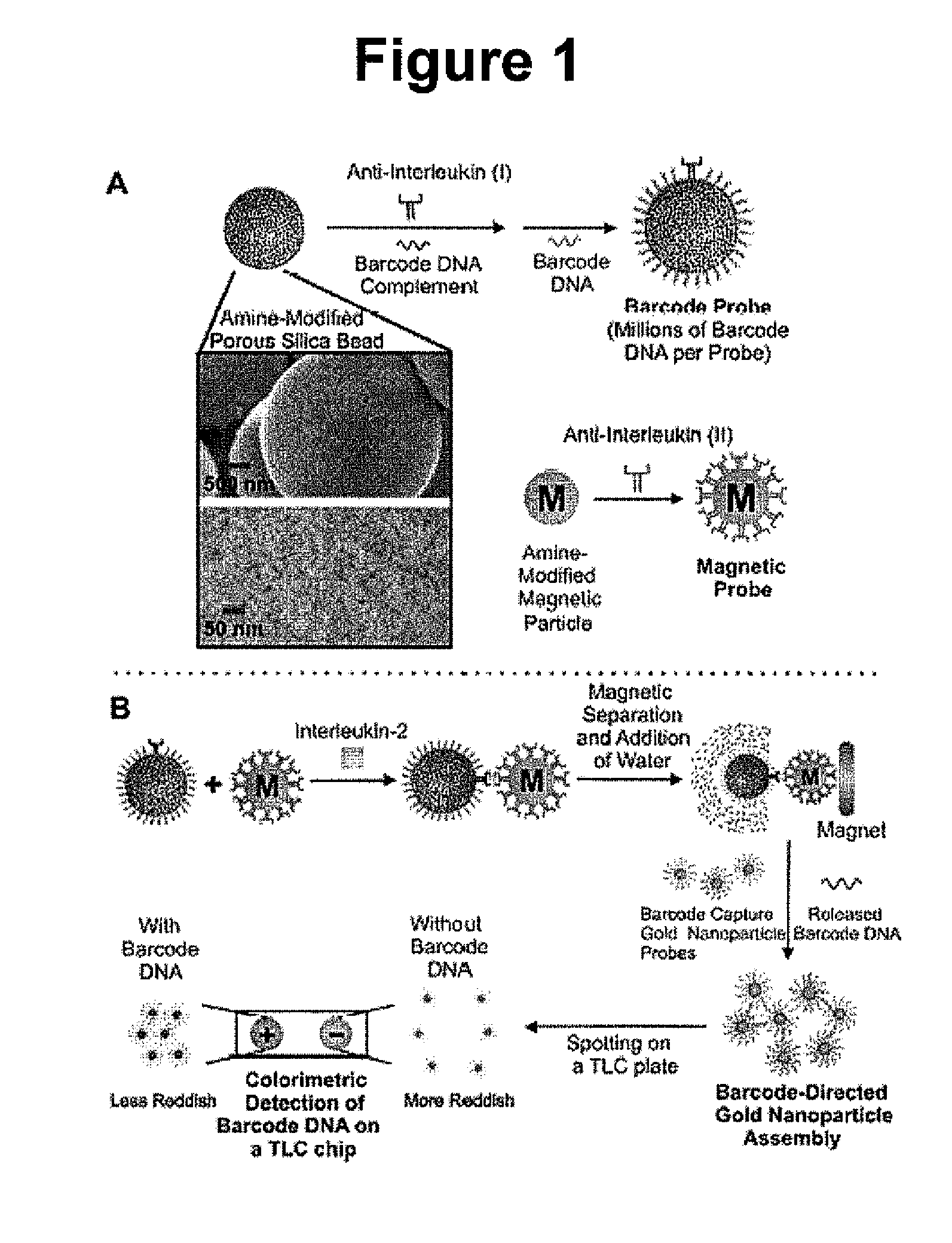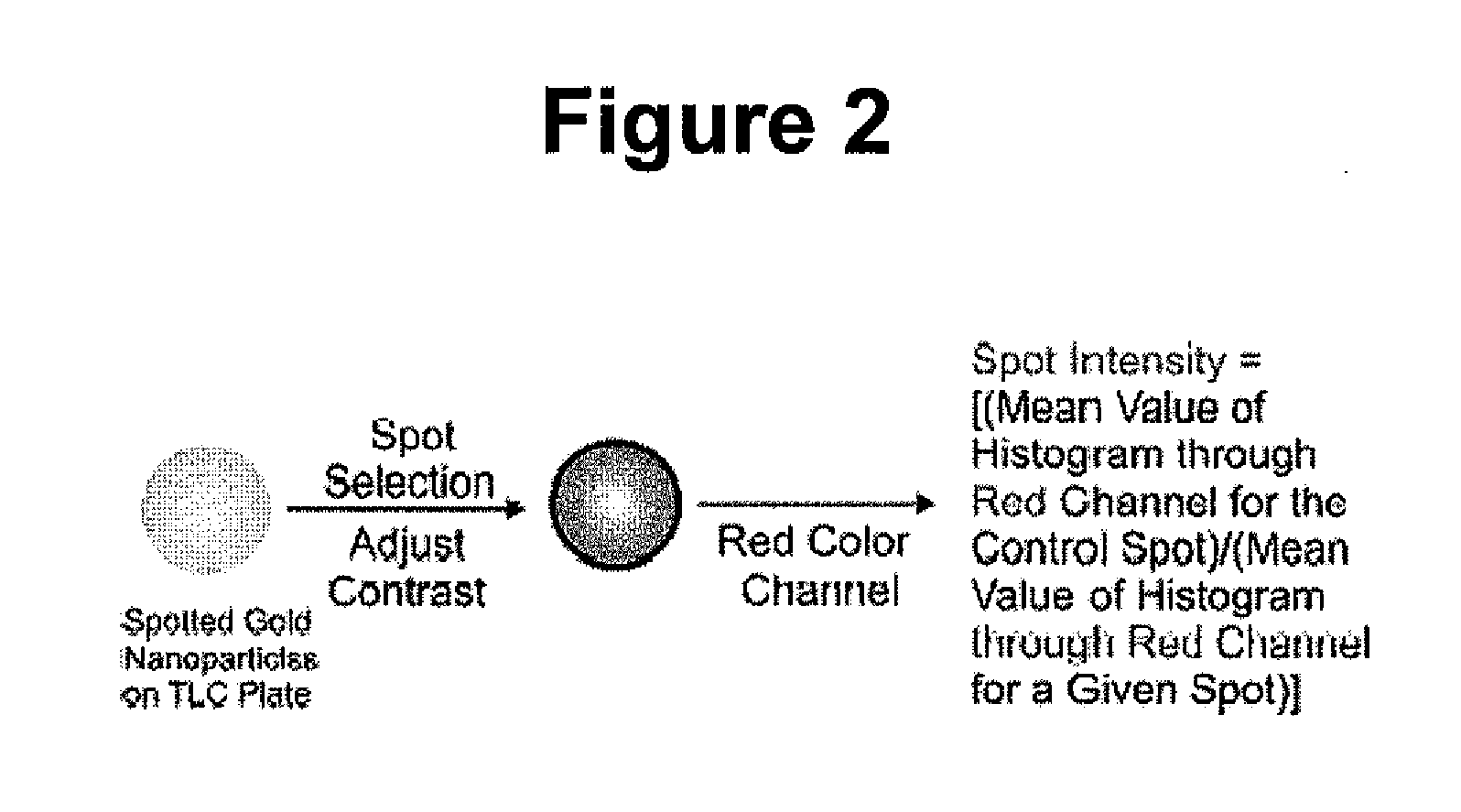Amplification assay for analyte detection
- Summary
- Abstract
- Description
- Claims
- Application Information
AI Technical Summary
Benefits of technology
Problems solved by technology
Method used
Image
Examples
example 1
Materials and Methods
[0155]Electron Micrographs. LEO 1550 Scanning Electron Micro-scope (SEM) at UC Berkeley Microlab facility has been used. The images were taken using 3 kV acceleration voltage at a working distance of 3 mm after vapor deposition of ˜3 nm Chromium onto the sample.
[0156]Barcode Probe Preparation. To prepare the barcode probes, 1 ml of an aqueous suspension of the amino-functionalized porous silica microparticles (1.57×109 ml−1 diameter: 3.53±0.49 μm; obtained from Phenomenex, Torrance, Calif.) was centrifuged for 5 min at 10,000 rpm, and the supernatant was removed. The particles were re-suspended in PBS solution, and the centrifugation step was repeated once more. The resulting polystyrene particle pellet was re-suspended in 1 ml of 8% glutaraldehyde in PBS solution at pH 7.4. The solution was mixed for 5 hrs on a rocking shaker. Centrifugation followed for 5 min at 10,000 rpm, and the supernatant was discarded (this step was repeated two more times). The resultin...
example 2
Colorimetric Bio-Barcode Amplification Assay for Cytokines
[0159]In this work, our assay target is interleukin-2 (L-2). IL-2 is a secreted human cytokine protein that mediates local interactions between white blood cells during inflammation and immune responses. Cytokines play a central role in the regulation of hematopoiesis; mediating the differentiation, migration, activation and proliferation of phenotypically diverse cells.21,22 Improved detection limits of cytokines will allow for earlier and more accurate diagnosis and treatments of cancers and immunodeficiency-related diseases and lead to an increased understanding of cytokine-related diseases and biology, because cytokines are signature biomarkers when humans are infected by foreign antigens. Conventional cytokine detection assays have a detection limit of ˜50 fM and the detection limit of enzyme-based rolling-circle amplification method is ˜500 aM.
[0160]In a typical bio-barcode calorimetric bio-barcode assay, two types of p...
PUM
| Property | Measurement | Unit |
|---|---|---|
| Size | aaaaa | aaaaa |
| Size | aaaaa | aaaaa |
| Size | aaaaa | aaaaa |
Abstract
Description
Claims
Application Information
 Login to View More
Login to View More - Generate Ideas
- Intellectual Property
- Life Sciences
- Materials
- Tech Scout
- Unparalleled Data Quality
- Higher Quality Content
- 60% Fewer Hallucinations
Browse by: Latest US Patents, China's latest patents, Technical Efficacy Thesaurus, Application Domain, Technology Topic, Popular Technical Reports.
© 2025 PatSnap. All rights reserved.Legal|Privacy policy|Modern Slavery Act Transparency Statement|Sitemap|About US| Contact US: help@patsnap.com



